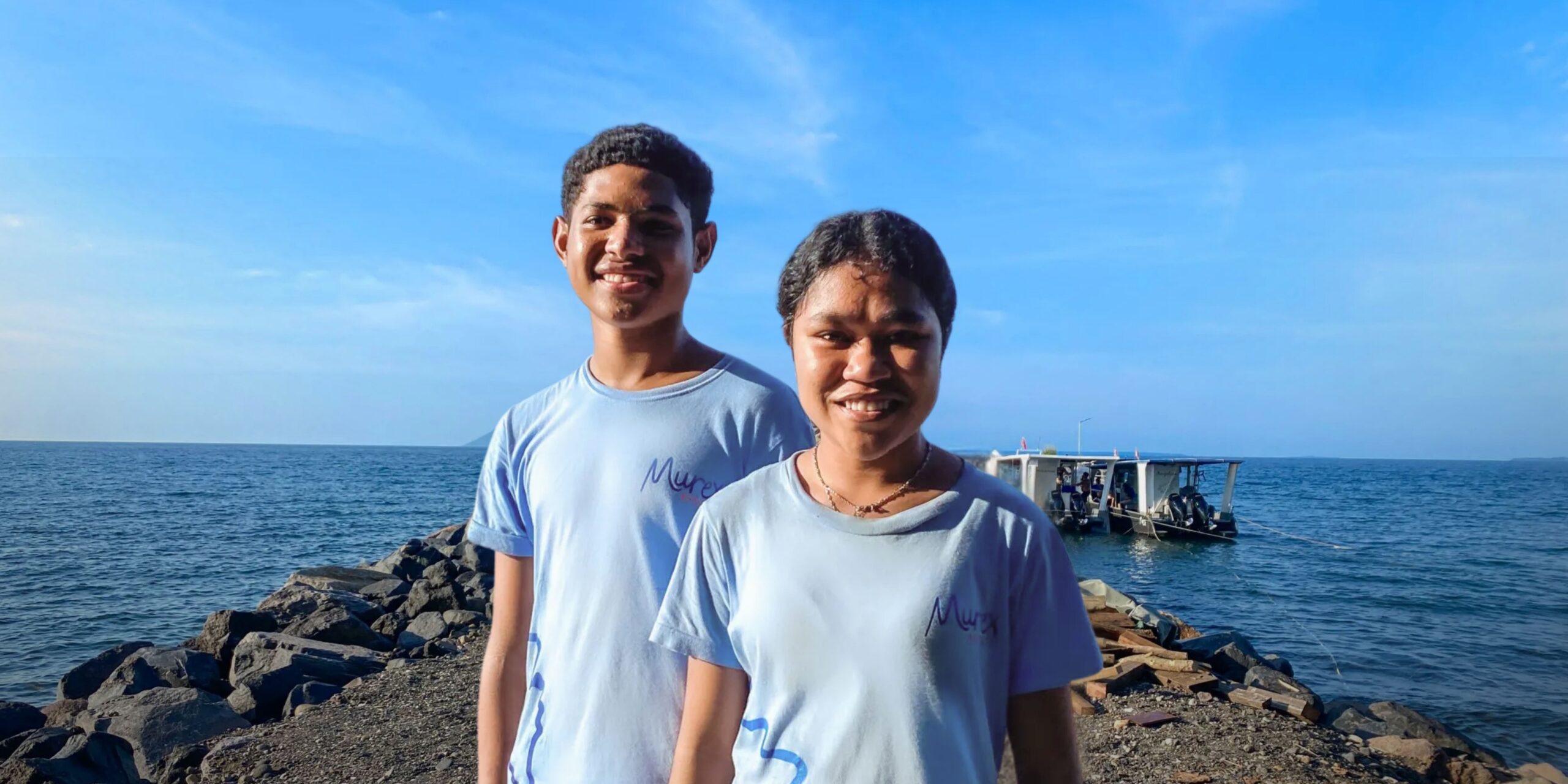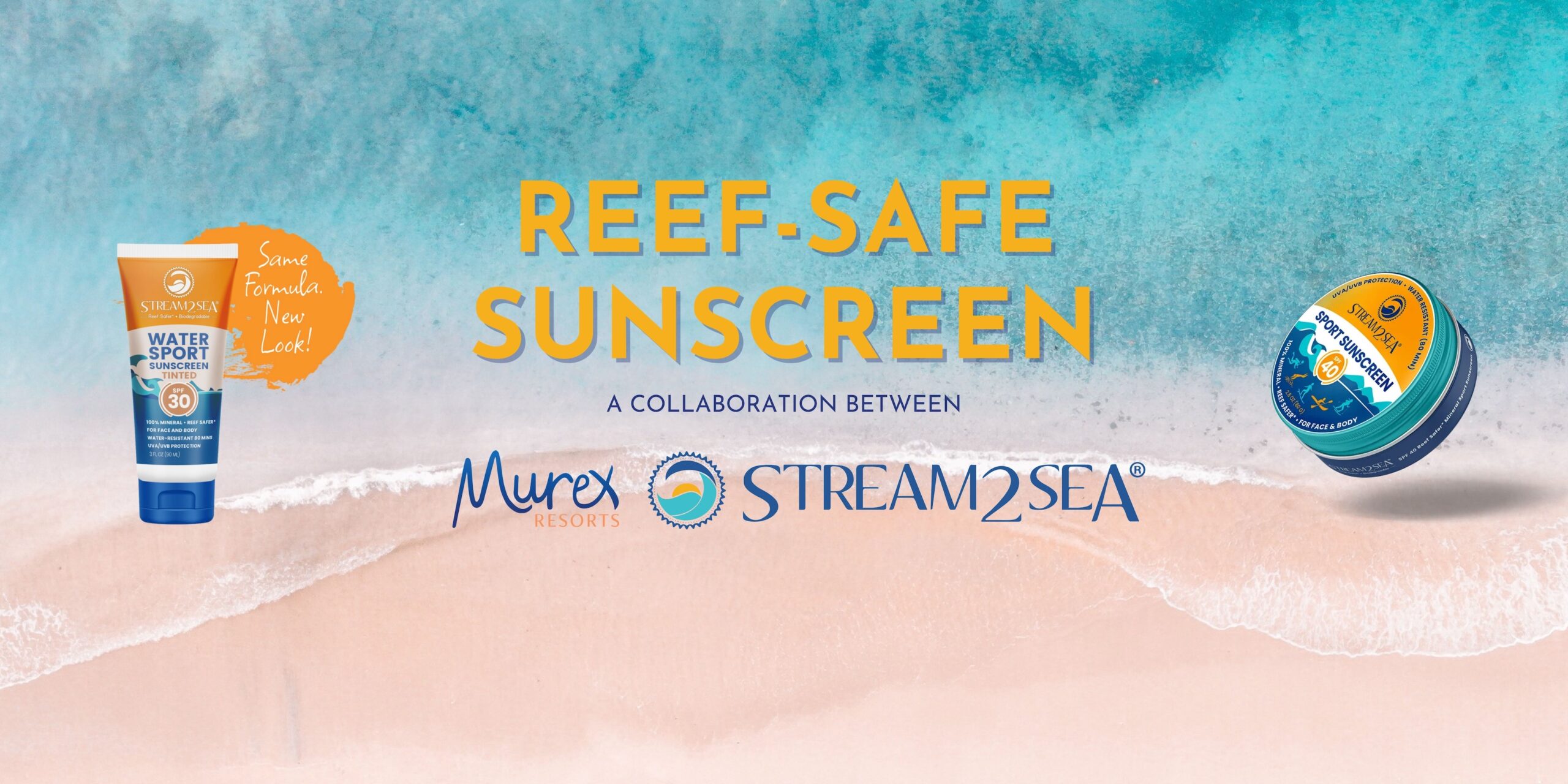Hippocampus Makes Happy Campers
Monthly Marine Life Feature: Seahorses
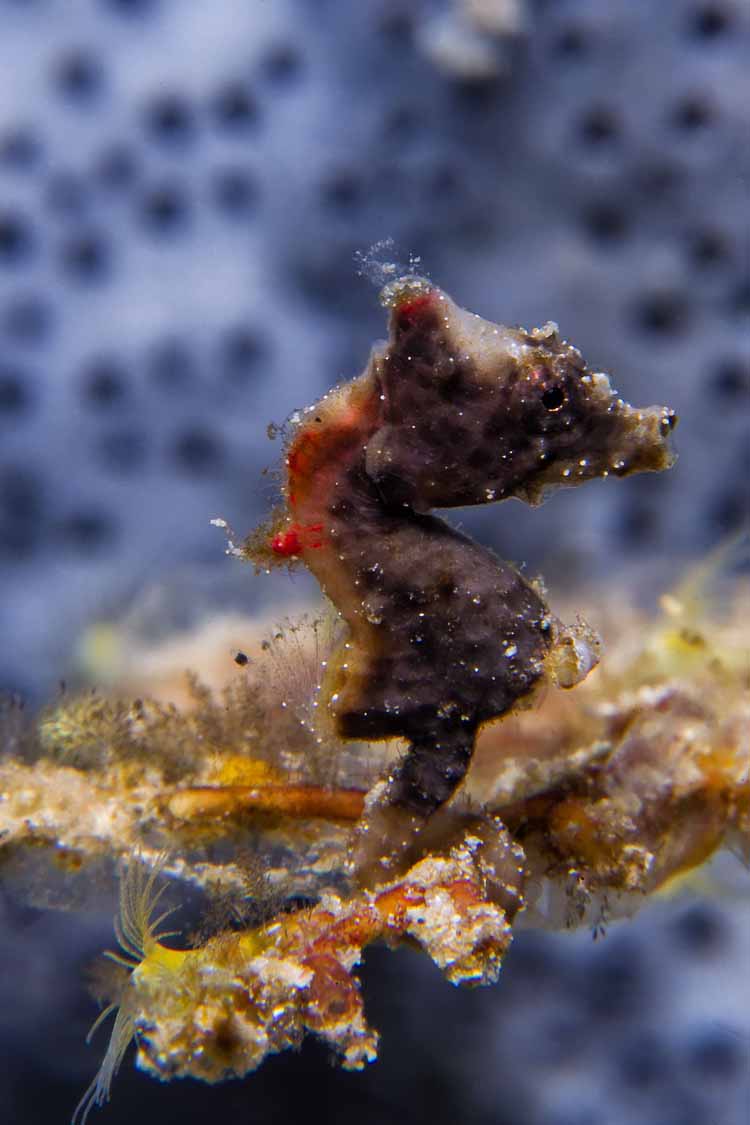
Hippocampus Severnsi
This month our marine life Blog takes a look at seahorses species of North Sulawesi: where they can be found, how to recognise them and how to see as many species as possible during your Murex diving vacation.
Did you know that Hippocampus is the scientific name for “Seahorse”? Did you also know that here in North Sulawesi we are exceptionally lucky to have a huge variety of sea horse species on our reefs? We do! Across our three resorts we see more than 4 species of seahorses PLUS we have an additional 4 species of pygmy sea horses too! The different species prefer different areas and habitats so if you are hoping to see as many of these beautiful creatures as possible why not try our Passport to Paradise Package where you visit three different areas, have the option to dive from resort to resort (no boring or time wasting car transfers) and you can see a huge range of sea horses and other marine life.
To show you the range of seahorses and pygmy seahorses we have in North Sulawesi we have put together this “Hippocampus Helper” – or “Seahorse Guide” so you can see which species prefer which resorts and dive sites!
Murex Dive Resorts’ Hippocampus Helper
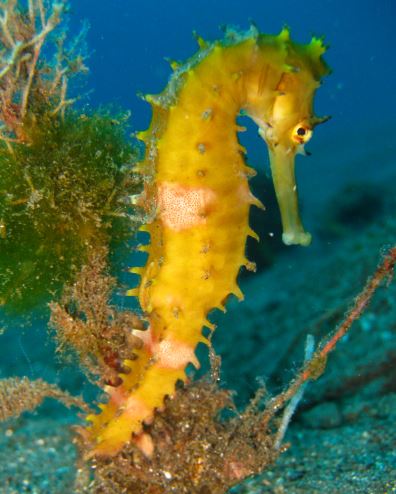
Thorny Seahorse
Thorny Seahorse (Hippocampus hystrix)
The thorny seahorse grows up to 15cm and ranges in colouration from bright yellow to shades of red, green and brown – often characterised by gold speckles. It is easily recognisable by the spines that protrude from its head and body ridges. It is commonly found in coastal reefs attached to weeds, rubbles, soft coral and some fans.
Best sight for spotting the Thorny Seahorse: Paradise Pier, Murex Bangka
Common Seahorse (Hippocampus taeniopterus)
The common seahorse is a favourite around Manado and one of the larger species growing up to 22cm. We find this seahorse mainly amongst seagrass and it is recognisable by its bac-swept smooth crown. The colour range of the common seahorse is limited to browns and blacks with females occasionally being slightly yellower.
Best site for spotting the Common Seahorse: Bethlehem Manado, Murex Manado
Moluccan Seahorse (Hippocampus moluccensis)
Despite its name this species is not only found in the Maluku – it lives in Lembeh on the black sand sites too! The Moluccan seahorse varies in colour from browny purple to shades of red, orange and yellow. To recognise this species look out for white saddles on the neck and back and white striations around the eyes. It’s usually found in depths of less than 20 meters and grows up to 16cm.
Best site for spotting the Moluccan Seahorse: TK Lembeh, Critters @ Lembeh
Estuary Seahorse (Hippocampus kuda)
This is another species found in Lembeh – it is easy to recognise by the long filaments on its crown and snout. This seahorse also has a black band on its dorsal fin. We usually find the Eastuary seahorse in depths of less than 10 meters and it grows to around 15cm.
Best site for spotting the Estuary Seahorse: Air Bajo Lembeh, Critters @ Lembeh
Pygmy Seahorses

Hippocampus Bargibanti
Bargibanti Pygmy Seahorse (Hippocampus bargibanti)
The Bargibante species was the first species of pygmy to be discovered. They inhabit sea fans (Muricella) which they also feed on and take their colouration from. They are usually a pinkish colour with darker coloured warts and spots. It is not unusual to see several individuals on one fan. The little seahorse grows to around 2cm and can be found at depths up to 40 meters!
Best site for spotting the Bargibanti Pygmy Seahorse: Lekuan I, Bunaken, Murex Manado
Denise’s Pygmy Seahorse (Hippocampus denise)
The Denise Pygmy Seahorse is even smaller than the Bargibanti and reaches up to only 1.5cm! Unlike the Barigibanti it does not have warts but smoother skin. These little seahorses are usually found on gorgonian sea fans where they hold on to the blades with their tails. Denise’s Pygmy Seahorses have been seen at depths of up to 70 meters!
Best site for spotting Denise’s Pygmy Seahorse: Lembeh Strait, Critters@Lembeh
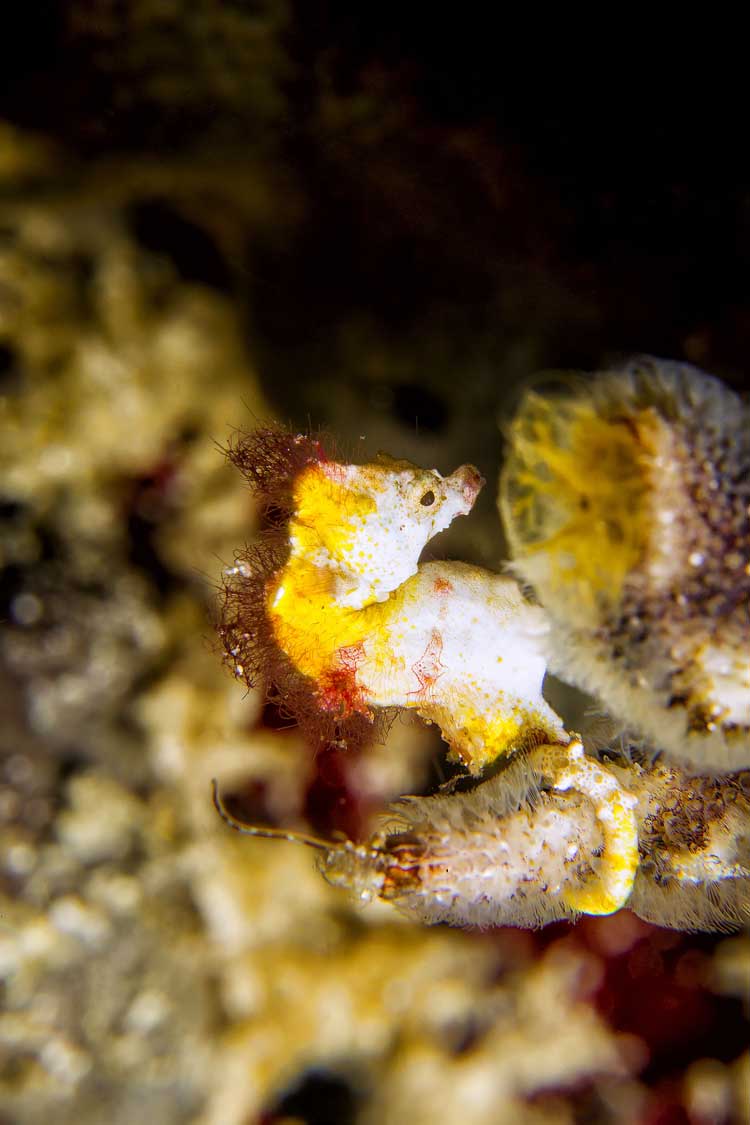
Hippocampus Pontohi
Pontohi Pygmy Seahorse (Hippocampus pontohi)
This seahorse grows only up to 1cm and lives on hydroids and algae where it mimics dead leaves and weed. The Pontohi doesn’t stay static though – it tends to move about which makes it even more rewarding to find! It has a white body with reddish filaments that resemble hair like strands, its back and crown are usually a yellowy / orange colour.
Best site for spotting Pontohi Pygmy Seahorse: Tiga Batu, Bangka Island, Murex Bangka
Severn’s Pygmy Seahorse(Hippocampus severnsi)
The severnsi species of pygmy seahorse is still in debate – after scientist believed they had discovered a new species of pygmy it is now widely believed that this may in fact be just a dark colour variation of the Pontohi Species. Either way – it is a magnificent find on the reefs – especially around our Bangka resort where it can be found at a number of dive sites. The Severn’s species has excellent camouflage colouration and blends in well to black corals, weeds and algae. This seahorse reaches only 0.5cm so could be the early stage of the Pontohi.
Best site for spotting Severn’s Pygmy Seahorse: Sabora, Bangka Island, Murex Bangka



